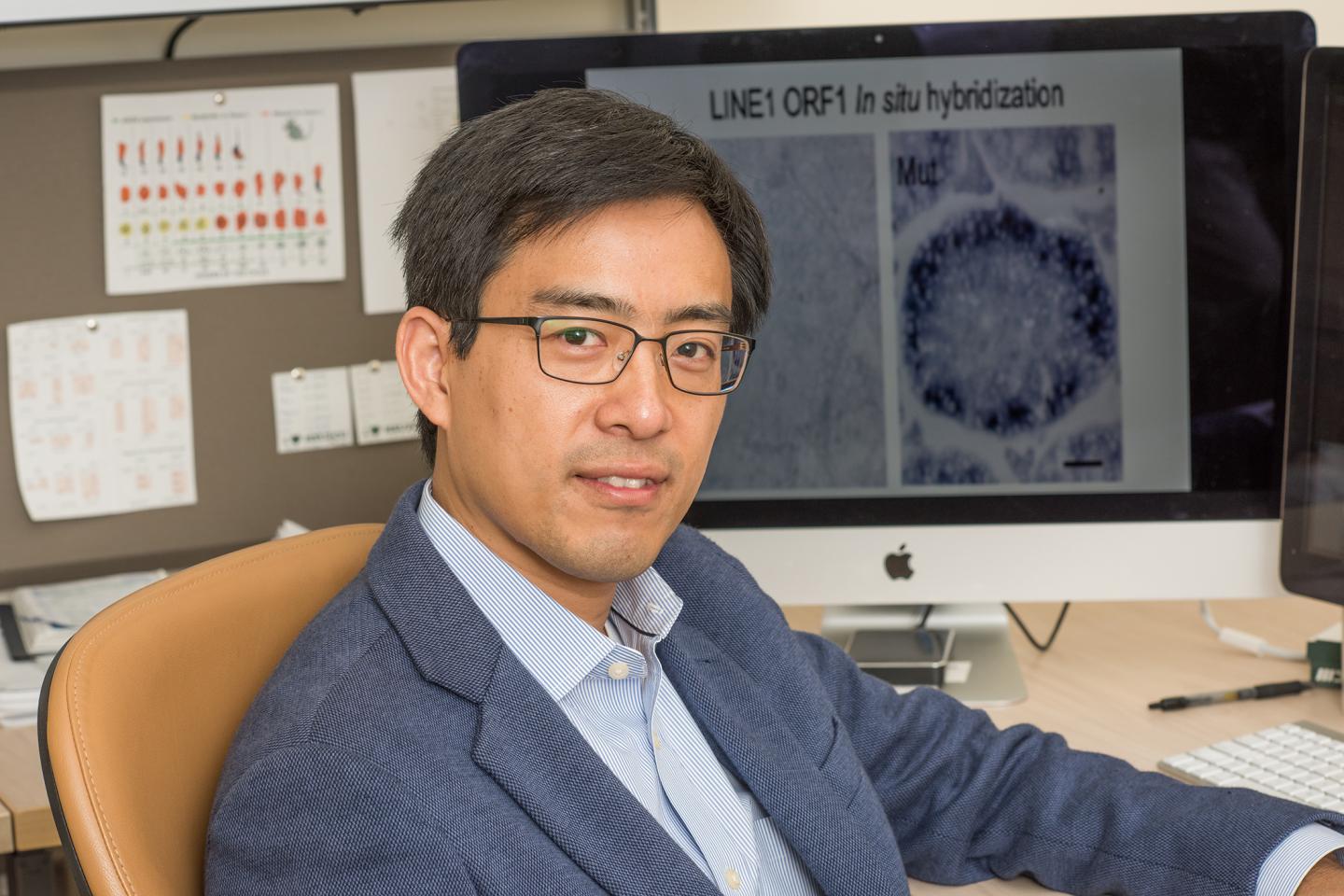
Credit: Photo by Derrick Turner
EAST LANSING, Mich. – When it comes to birth control, many males turn to two options: condoms or vasectomies. While the two choices are effective, both methods merely focus on blocking the transportation of sperm.
New research led by Michigan State University and published in Nature Communications, however, has given scientists a genetic foundation for a different option. Chen Chen, MSU animal science assistant professor, and a team of scientists turned off the gene that controls sperm production, effectively silencing spermatogenesis in mice.
Since mice are mammals and use many of the same genes for reproduction as humans, this finding provides a strong lead for future research on human male contraception as well as animal sterilization.
"More than 500,000 men get vasectomies every year," Chen said. "There's a huge market for this research, and now we further understand the genetic underpinnings of sperm development in mammals."
At the genetic level, Chen identified PNLDC1, a genetic trimmer, as the key in this process. PNLDC1 trims small silencing RNAs that silence transposons, which can be described as genomic parasites. They're also called "jumping genes" and can hop into good genes and disrupt them by causing human diseases.
Transposons are kept in check by small silencing RNAs called piRNAs that can recognize and destroy these genomic parasites. In the case of sperm production, PNLDC1 silences harmful transposons by trimming piRNAs to a healthy length. This keeps piRNAs more stable and effective in fighting against transposons.
At the cellular level, the protein encoded by this gene is essential in genomic parasite regulation. Without PNLDC1, male mammals lose the ability to fight transposons. This arrests sperm cell development, and ultimately, at the physiological level, the result is sterilization.
To see if the genetic changes produced the desired results, Chen's team employed CRISPR/Cas9 technology to produce a genetically modified line of mice lacking the PNLDC1 gene. Bred without PNLDC1, the mice had fewer sperm and smaller testicles, leaving them infertile. The researchers also observed that PNLDC1 wasn't overly involved in other biological activities.
There were few, if any side effects, and the mice had no obvious differences in growth, behavior or appearance, other than having small testicles. The defect from PNLDC1 deficiency also is male specific. This genetic immune system is required for male germ cell development, but it isn't part of female germ cell development in mammals.
When the scientists examined the mice, they saw that they had longer, untrimmed piRNAs, confirming that PNLDC1 was the key, Chen said.
"This small RNA-based immune system is quite smart. It can detect what sites are producing parasite-infested RNAs, and go there and shut them down," he said. "So silencing transposons is like fixing a water leak in your house. Rather than stuff a rag into the leak and hope that it works, we went to the source and turned off the water supply."
###
The MSU scientists on Chen's team were Deqiang Ding, Jiali Liu, Uros Midic, Huirong Xie and Elena Demireva. Additional scientists from China Agriculture University and the University of Illinois contributed to this study.
This research was funded in part by the National Institutes of Health and MSU AgBioResearch.
Michigan State University has been working to advance the common good in uncommon ways for more than 150 years. One of the top research universities in the world, MSU focuses its vast resources on creating solutions to some of the world's most pressing challenges, while providing life-changing opportunities to a diverse and inclusive academic community through more than 200 programs of study in 17 degree-granting colleges.
For MSU news on the Web, go to MSUToday. Follow MSU News on Twitter at twitter.com/MSUnews.
Media Contact
Layne Cameron
[email protected]
517-353-8819
@MSUnews
http://msutoday.msu.edu/journalists/
Original Source
http://go.msu.edu/Pnz





